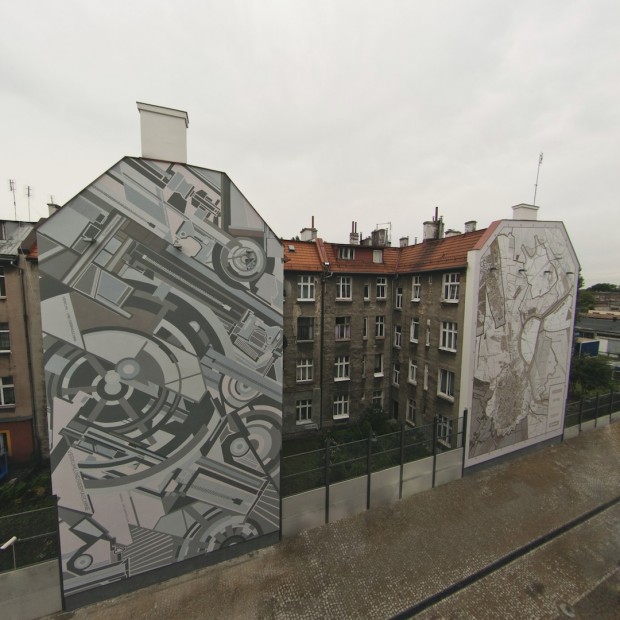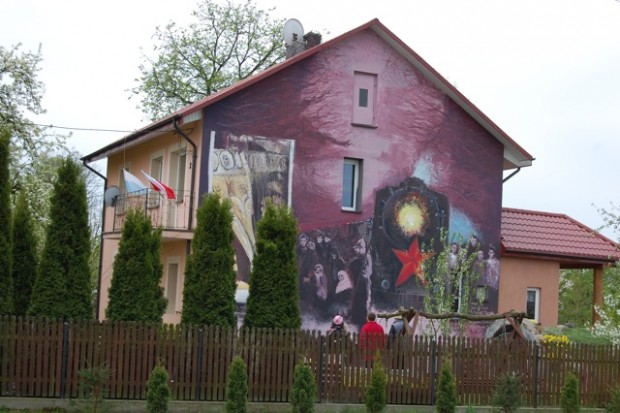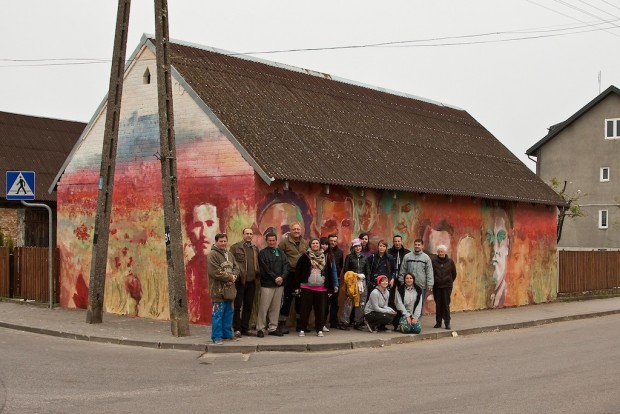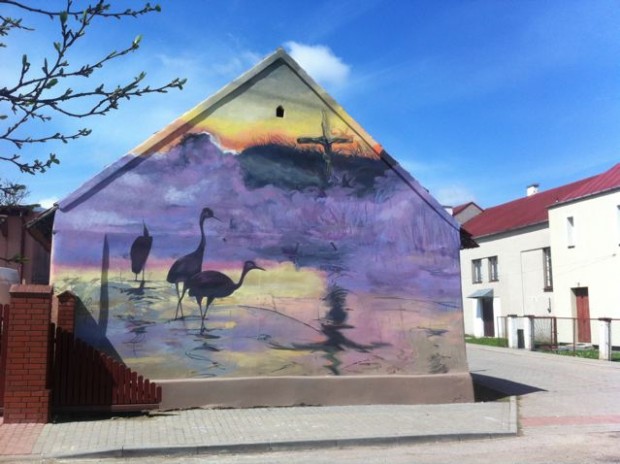Pilotów 16f
2016
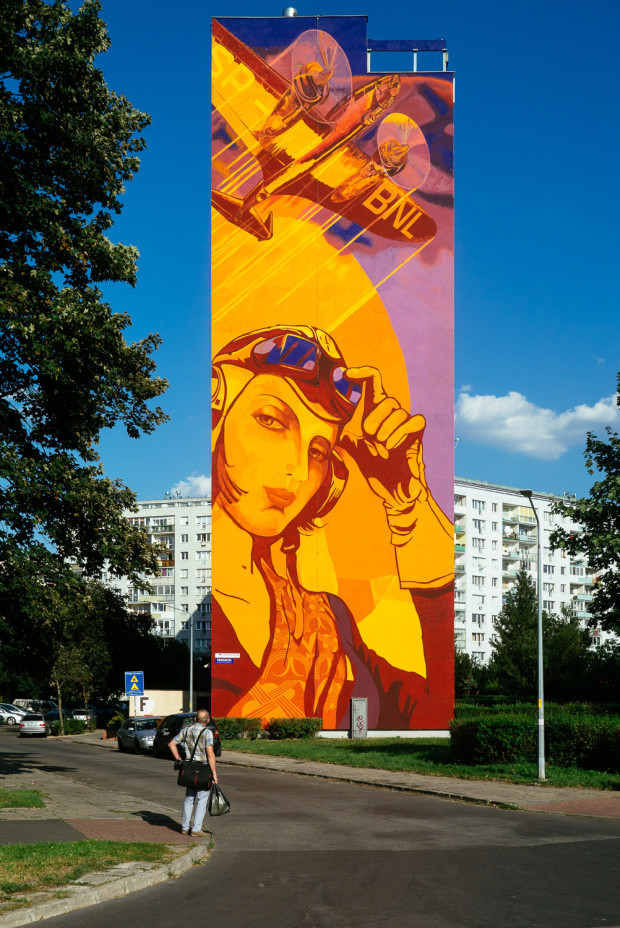
After many years of creative acquaintance, it is the first authorial collaboration of Rafał Roskowiński and Jacek Zdybel.
The mural directly refers to the aviation history of the space on which Zaspa was founded and praises the aesthetics of modernism and Polish technical thought of the interwar period.
The plane depicted on the mural is PZL 37 Łoś, a Polish bomber designed by Jerzy Dąbrowski. The plane was a breakthrough design in many respects. It is painted according to an advertising poster prepared for the Paris Air Show in 1938. What’s interesting, it’s depicted in civilian, not military identification.
The image of a pilot woman at the bottom of the wall is inspired by Tamara Lempicka, a Polish modernist painter. Although Lempicka did not fly by herself, she loved speed – hence her famous self-portrait in the green Bugatti. Movement, momentum, machine, futurism were the key slogans of the modernism of the Art Deco era. Patterns on the scarf come straight from the visual setting of the Polish pavilion from the international design exhibition in Paris in 1925.
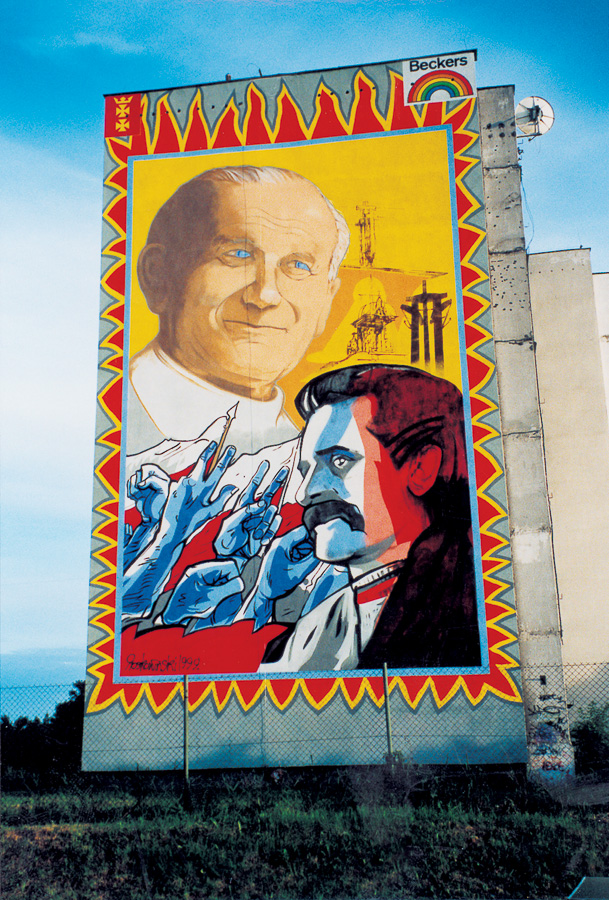
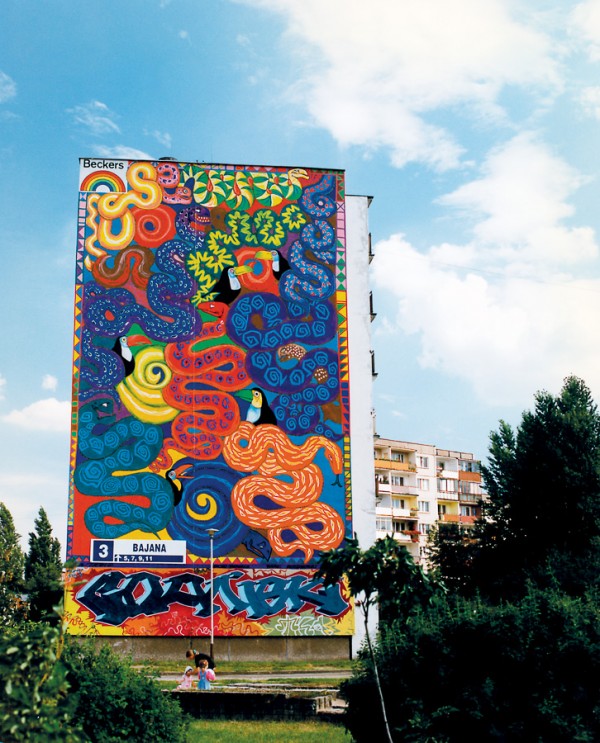
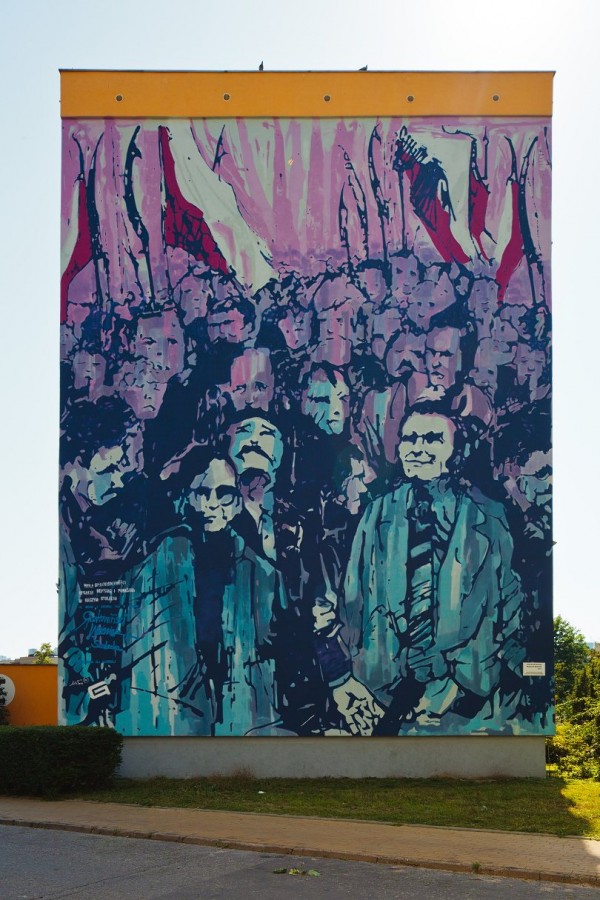

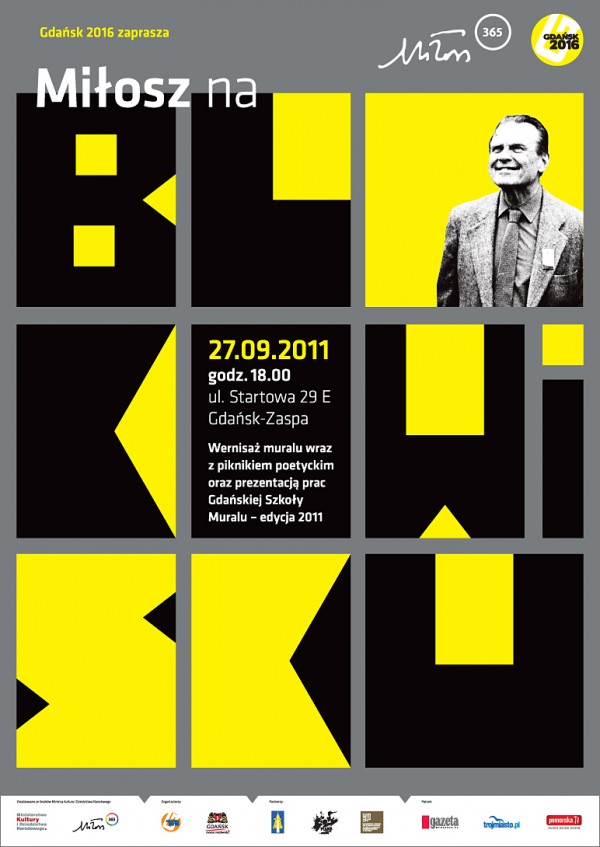
![ghandawa[1]](http://muralegdanskzaspa.pl/wp-content/uploads/2016/02/ghandawa1-620x329.jpg)
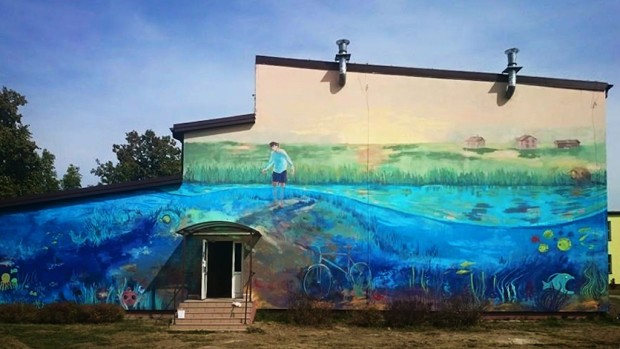
![michał-węgrzyn-3.900.601.s[1]](http://muralegdanskzaspa.pl/wp-content/uploads/2016/02/michał-węgrzyn-3.900.601.s1-620x413.jpg)
